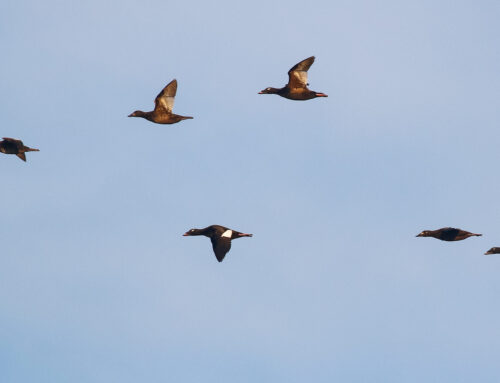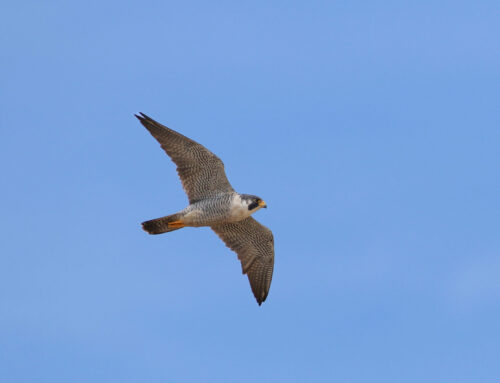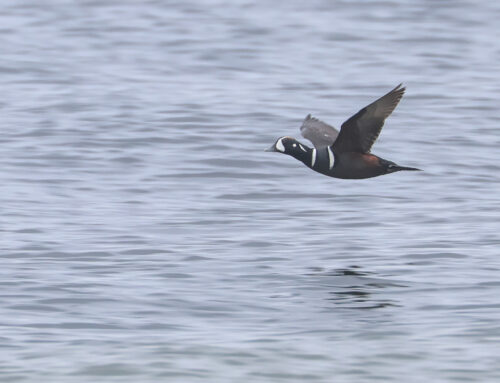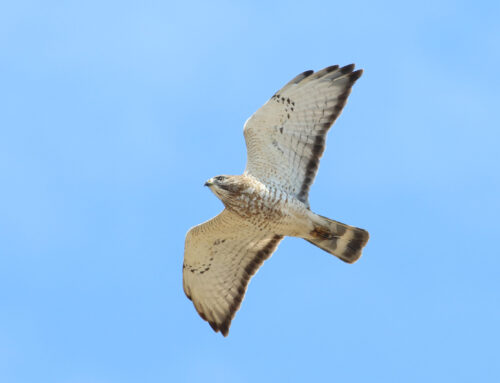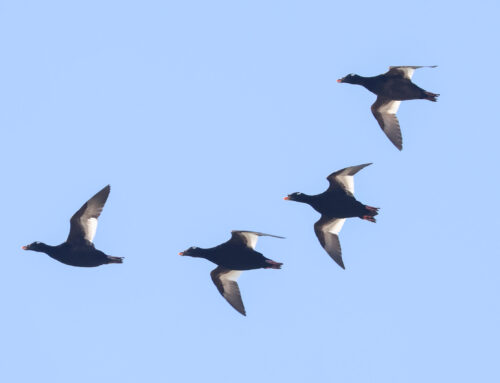With just over a week left in the season, the makeup of migrants counted from the waterbird shack has continued to change. Long-tailed Ducks are still being seen in triple-digit totals regularly, and are by far the top species counted with a current total of 20,960, but they no longer dominate each day’s flight quite the way they had on some of the biggest days of the season in late October. Common Goldeneye and Bufflehead now constitute a significant proportion of the count. These two ducks had a particularly good day on November 4th, when a total of 354 Goldeneye and 409 Bufflehead were recorded, and they currently stand at totals of 934 and 806, respectively. Looking at the long-term average counts of 2,344 for Goldeneye and 1,702 for Bufflehead leads me to hope there’s another big day or two coming for these two striking species.
Scoter numbers continue to be a bit low. White-winged totaled just 55 through the first six days of November, which is beyond the traditional peak of their migration, so with a current total of 1,632 they are certain to remain far below the average of 3.046. Surf also remains a bit low, with a count of 531 and an average of 732. Black Scoter is much closer to average — 147 vs. 175.
The weekend saw a small uptick in the number of Aythya, though overall their numbers remain quite low as well. Redhead are slightly above average totals, but Ring-necked, Greater and Lesser Scaup, and Canvasback all remain well below average. The overall combined total of identified and unidentified Aythya ducks is low for the fall, with a current sum of 10,279 compared to a full season average of 14,559. Dabblers are, expectedly, all but gone, though a small handful of Mallard and Black Duck have been seen recently.
One new recent new arrival for the season is Hooded Merganser, first spotted on November 4, and currently totaling seven individuals. Glaucous Gull has been recorded on the count three times now, with the first on October 29, bringing the gull diversity to five species along with Ring-billed, Herring, Bonaparte’s, and Great Black Backed. A small number of Common and Red-throated Loons are still being seen, as well as the ubiquitous Red-necked Grebe, which remains in second place for the fall with a season total of 10,934.
Snowy Owls have popped up at the Point twice now, on October 28 and November 3. Northern Shrikes are also being seen somewhat regularly, with a current total of 12 on the waterbird count. Finches are also a big component of the early morning action lately, and Common Redpolls, often seen in flocks streaming off Lake Superior, currently number 1,070 individuals to lead the way, though Pine Grosbeak, Evening Grosbeak, Red Crossbill, Purple Finch, American Goldfinch, and Pine Siskin have all been recorded from the shack lately as well.
As always, this post only covers a portion of what’s been happening on the waterbird count lately. Be sure to check out Dunkadoo to see the complete species totals, charts, and live updates each day throughout the count!
Gary Palmer
WPBO Fall Waterbird Counter


